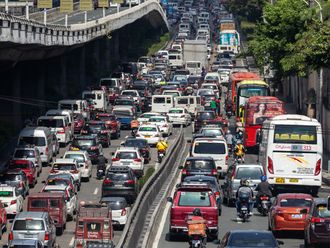
Manila: The tummy ache initially disguised as hyperacidity. One Saturday (April 22), I found myself writhing in pain before throwing up. It left a bitter aftertaste. Ignoring the pain was in vain. I thought it was just bad gas. Wrong. The pain worsened. Ten hours after the initial pain hit, I decided to call for help.
“You’re going to the operating room — right now,” the surgeon, Dr. Khem Perez, declared. The symptoms — severe abdominal pain, loss of appetite, fever, nausea and vomiting, and elevated white blood cells count — pointed to what he called “acute suppurative appendicitis”. The trigger: an inflamed appendix, the small pouch-like organ in the lower right side of the abdomen.
After somes tests and checks done by ER nurses, I found myself in the operating room. “Welcome to our playground,” said an OR staff, in a light-hearted banter. That eased the pain a bit. Five lessons I learnt from the hospital episode:
#1. 'Appendectomy is always an emergency'
Acute appendicitis can hit anyone, anytime. "Appendectomy is always an emergency,” said Dr Khem Perez, the surgeon at MetroHealth Specialists Hospital. Wait a day longer and it may be too late.
A handful of people I know, including two colleagues, have had it and went the same way. Appendicitis can occur at any age, from infants to older adults. It is most commonly seen in people between the ages of 10 and 30. It occurs in 7% of the general population, with an incidence of 1.1 cases per 1,000 people per year — that’s 1,100 people per million per year. Symptoms and the level of pain vary from person to person.
The surgery was done relatively quickly. I went through certain checks around 10pm, before the OR session. By around 10.54pm, the pesky appendix was out. By 1am, I was already in the recovery room. Dr. Perez left only a small incision in my lower right abdomen. What happened next? There were slight changes in my bowel movements — diarrhoea or constipation — but the sense of bloating or cramping eased off with each passing day. He removed the sutures a week later.
#2. Experts are a godsend
The surgeon, Dr Khem Perez, has done thousands of surgeries in his career, and whose professional certifications are twice longer than his name. After a spinal anaesthesia (subarachnoid) was administered, I didn't know what happened next. It went like magic. I woke up maybe less than 30 minutes later.
Dr. Perez is a straight talker: 48 hours after he cut my tummy open, he asked while dressing my wound: “No more pain?”
“Only in the incision part,” came my reply.
Having experts willing and able to do the job on short notice, on a Saturday night, is very reassuring. These doctors, nurses and hospital staff working round the clock are community heroes. About 64 hours after hospital admission, I was discharged. He removed the sutures a week later.
#3. Gratefulness
Post-surgery, sleep didn’t come easy. I was awake most of the time as nurses did their rounds every 2 hours. After 3 days, I moved bowel for the first time. It was a sign of a successful procedure, and moment to be grateful for. How long does it take to heal inside after an appendectomy?
Recovery was uncertain, it was the first time under surgery. I learnt that most patients leave the hospital 1 to 2 days post-surgery. Most of those I talked to said at least six months after the procedure must go by without heavy lifting. It’s great to have colleagues and bosses who understood my situation. I was given a full month off to recover.
#4. Downtime, bills, health insurance
Given the COVID curbs still in place, I was sequestered in the recovery room under the watchful eye of my brother (he was the anaesthetist in the OR) — until my wife cleared the antigen test the next day.
Also, feasted on movies with films starring Filipino comedy greats Dolphy and Babalu, Bollywood flicks, (i.e. Mrs Chatterjee vs Norway), tear-jerking dramas and docus. The post-surgery downtime was great for introspection, catching up with Netflix, connecting with family and friends, and visiting my grandpa’s farm. That refreshed my perspective. One key lesson: All the drama related to hospital bills would be massively eased by getting decent health insurance coverage, in addition to the government-provided/mandated one.
#5. Each day is a gift
In the recovery room, I saw a parade of trainee nurses willing to go through the paces and pains of learning on the job. They took turns checking my vitals, blood sugar, dispensing medicines, set the saline and antibiotics drips. Lucky me, I thought.
What of the reported shortage of medical staff in the Philippines? In a way, I saw a part of it play out. On small talks during their rounds, many didn’t hide their intentions to move to greener pastures.
What I saw in the ER, operating and recovery rooms, however, is a suite of medical staff both young and seasoned. There’s a new generation of healthcare workers in these parts willing and able to help heal the world with their magic touch. It’s not a hopeless case. With every problem, an opportunity; with every health issue, hope for healing. The whole episode made me count each day as a gift.










